TalenT MobiliT y: FroM Career DevelopMenT To agiliT y - Edie L. Goldberg, Founder, E.L. Goldberg & Associates NOVEMBER 2022 • Vol. 09 • No. 11 (ISSN 2564-1972) 16 10 21 28 Why bother With Career Development - Dr. Beverly Kaye, BevKaye&Co. Creating a Data-Driven and Human-Centric Talent Management approach - Alrik Boonstra, Irdeto Six Strategies To nurture and retain Talent - Shaara Roman, The Silverene Group 5 Tips For building The best Talent and Unleashing rapid growth and innovation - Jill Stelfox, Panzura

07 in D e X On the Cover Talent Management Excellence NOVEMBER 2022 Vol.09 No.11
promise goes far beyond career development alone, it makes your company more agile
Goldberg & Associates (ISSN 2564-1972) Articles 12 Employee Freedom Can Reduce Turnover Work looks different today & benefits should reflect that - Jennifer Strauel, Chief People & Diversity Officer, arrivia 19 Pay Transparency: Should You Keep Your Salary A Secret? Pay transparency increases trust and reduces discrimination - Yoram Solomon, Founder, Innovation Culture Institute™ LLC. 24 Conquering The Great Resignation: Successfully Building A Diverse, Growing Organization Communicate clearly, value diversity, foster professional development, and promote work-life balance - Lana Lodge, Executive VP, MPOWER Financing 30 Sometimes They Come Back: Understanding The Boomerang Effect The decision to hire a boomerang team member is ultimately a two-way street - Amy Zimmerman, Chief People Officer, Relay Payments 32 Look Harder & Smarter For Marginalized, Talented Resources Do not sit back and hope for a miracle - Joanne Lockwood, CEO, SEE Change Happen
Talent Mobility: From Career Development To agility ITM’s
- Edie L. Goldberg, Founder, E.L.
Why Bother With Career Development?
The business case for a manager’s time investment
- Dr. Beverly Kaye, Founder and CEO, BevKaye&Co.
Creating A Data-Driven And Human-Centric Talent Management Approach
Investing in and maintaining your talent data will help you make informed decisions
- Alrik Boonstra, SVP, Global Human Resources, Irdeto
Six Strategies To Nurture And Retain Talent
The first step in nurturing your team’s talent is adopting the right mindset

- Shaara Roman, Founder and CEO, The Silverene Group
Top Picks 10 16 21 28
5 Tips For Building The Best Talent And Unleashing Rapid Growth And Innovation



It’s good business sense to take care of people
- Jill Stelfox, Executive Chair and CEO, Panzura
INDEX
How are our Talent Management Products and Services helping to make you smarter?

Talent Management Excellence - Monthly Interactive Learning Journal
This monthly interactive learning experience captures key metrics and actionable items and keeps you focused on your Talent Management Needs.
Talent Management Webcasts for Credit
Talent Management Virtual Events
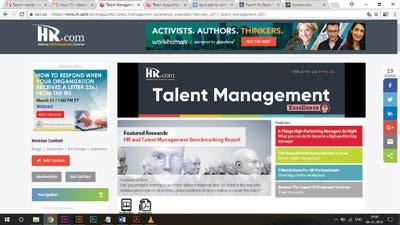
Talent Management Virtual Events will help individuals who deal with the different areas in talent management get a better understanding of the big picture of their organization. Manage performance and talent effectively by studying topics from compensation and incentives, technologies, and compliance to managing and tracking performance of an organization, a department, employee, or even the processes to build a product or service. Each Virtual Event consists of up to 10 credit webcasts.
HR.com webcasts deliver the latest Talent Management industry news, research trends, best practices and case studies directly to your desktop. Webcasts are available live online with a downloadable podcast and a copy of the slides (PDF) available before and after each webcast. Earn all of the required recertification credits for aPHR, PHR, SPHR, GPHR, and SHRM Certifications. HR.com’s one-hour webcasts, in every HR specialty including Talent Management, are pre-approved for HRCI and SHRM credit (excluding Demo webcasts).
Talent Management Community
Join almost 120,000 HR.com members with a similar interest and focus in the Talent Management Community. Share content and download research reports, blogs, and articles, network, and “follow” peers and have them “follow” you in a social network platform to communicate regularly and stay on top of the latest updates. This well established Talent Management Community is an invaluable resource for any HR professional or manager.
Use these invaluable Talent Management resources today! For more information phone: 1.877.472.6648 | email: sales@hr.com | www.hr.com
Debbie Mcgrath Publisher, HR.com
balakrishnan Editor, Talent Management Excellence


internal Talent Mobility Key to employee retention
There’s nothing demotivating than being stuck in a dead-end job with little chance of career progression. With over 4 million workers quitting their jobs every month and the U.S. unemployment rate at 3.8%, it’s clear that employees are leaving their jobs for career advancement elsewhere. Unless organizations offer career development opportunities and make their talent feel valued, they face the risk of losing talented employees.
It is clear that internal talent mobility (ITM) is more of a priority now than it was before Covid-19. How can organizations implement an ITM strategy? How do career agility and internal mobility work together?
The November edition of Talent Management Excellence includes informative articles that focus on internal talent mobility, strategies for reducing turnover, pay transparency, and much more.
Research says that only about one-third of employees are fully engaged at work. That means that most companies are leaving productivity on the table because two-thirds of employees are not fully engaged. Talent mobility has the potential to help employees tap into their interests and their passions, by enabling them to work on projects of their own choosing. Edie L. Goldberg’s article, Talent Mobility: From Career Development To Agility, offers valuable tips to leverage an internal talent marketplace.
To win in today’s agile job market, in particular in the tech market, an agile
talent management strategy and approach are required to retain and develop talent. If we can create a culture of growth internally, employees will feel empowered to seek new opportunities for development within the organization, share knowledge, and experiment beyond the parameters of their current roles, according to Irdeto’s Alrik Boonstra in his article, Creating A Data-Driven And Human-Centric Talent Management Approach.
Panzura’s Jill Stelfox in her article offers 5 tips for building the best talent and un leashing rapid growth and innovation.
Is it okay to talk about your salary with coworkers? Innovation Culture Institute’s Yoram Solomon in his article, Pay Transparency: Should You Keep Your Salary A Secret? explains how pay transparency increases trust and reduces discrimination.
In brief, organizations that invest in their people leave them with engaged and productive employees. This includes being intentional about who are hired, where they are placed, and how their individual skills are developed.
We hope
Happy Reading!
Disclaimer: The views, information, or opinions expressed in the Excellence ePublications are solely those of the authors and do not necessarily represent those of HR.com and its employees. Under no circumstances shall HR.com or its partners or affiliates be responsible or liable for any indirect or incidental damages arising out of these opinions and content.
babitha
eDiTor’S noTe
you
the articles
issue informative
find
in this
and helpful and, as always, we welcome your valuable feedback and suggestions.
OR For Advertising Opportunities, email: sales@hr.com Copyright © 2022 HR.com. No part of this publication may be reproduced or transmitted in any form without written permission from the publisher. Quotations must be credited.
Our mission is to promote personal and professional development based on constructive values, sound ethics, and timeless principles. Excellence
McGrath CEO, HR.com - Publisher Dawn Jeffers VP, Sales Sue Kelley Director (Product, Marketing, and Research) Babitha Balakrishnan and Deepa Damodaran Excellence Publications Managers and Editors Talent Management Excellence (ISSN 2564-1972) Babitha Balakrishnan Editor Chinnavel Design and Layout (Digital Magazine) Vibha Kini Magazine (Online Version) Submissions
Correspondence Please send any correspondence, articles, letters to the editor, and requests to reprint, republish, or excerpt articles to ePubEditors@hr.com For customer service, or information on products and services, call 1-877-472-6648 Talent Management Excellence is published monthly by HR.com Limited, 56 Malone Road, Jacksons Point, Ontario L0E 1L0 Internet Address: www.hr.com Subscribe now for $99 / year And get this magazine delivered to your inbox every month Become a Member Today to get it FREE! SIGN UP Write to the Editor at ePubEditors@hr.com
Editorial Purpose
Publications Debbie
&
In a world of unparalleled challenges (global pandemic, racial injustice, political rivalry, digital 4.0, emotional malaise), uncertainty reigns. Finding opportunity in this context requires harnessing uncertainty and harnessing starts with reliable, valid, timely, and useful information. The Excellence publications are a superb source of such information. The authors provide insights with impact that will guide thought and action.
Dave Ulrich
Rensis Likert Professor, Ross School of Business, University of Michigan Partner, The RBL Group
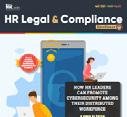
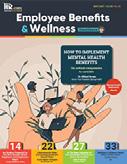



Excellence publications are my ‘go-to’ resource for contemporary and actionable information to improve leadership, engagement, results, and retention. Each edition offers rich and diverse perspectives for improving the employee experience and the workplace in general.
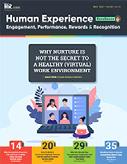
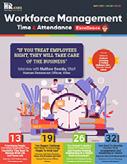
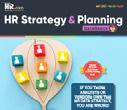
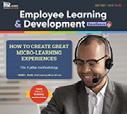
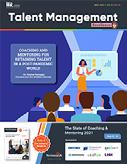
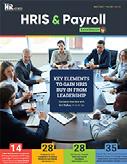
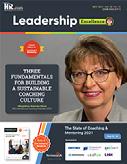

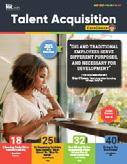
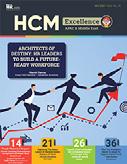
Julie Winkle Giulioni
Author, Virtual /Live Keynote Presenter, Inc.’s Top 100 Leadership Speakers
I regularly read and contribute to Leadership Excellence and Talent Management Excellence. I use many of the articles I read to augment my own presentations and I often share the articles with my clients. They are always quick, right on target for the latest issues in my field, and appreciated by my clients. If you want to stay up to date on the latest HR trends, choose a few of the different issues from the Excellence series of publications.
Dr. Beverly Kaye CEO, BevKaye&Co.

We’re eager to hear your feedback on our magazines. Let us know your thoughts at ePubEditors@hr.com WHY EXCELLENCE PUBLICATIONS?
Talent Mobility: From Career Development To agility
By Edie L. Goldberg, Ph.D., E.L. Goldberg & Associates
I’ve worked in organizations developing career management processes for over twenty years. But I’ve noticed the following problem with traditional career development methods: managers see employees only in terms of the skills they have to do their current job. They rarely know (or remember) skills employees developed in previous jobs that are not relevant to their current role; nor do they know skills they may have through their interests and hobbies.
Furthermore, managers have very little ability to see beyond the opportunities within their own team or function. This limited perspective doesn’t allow employees to develop except in one silo. Managers have a little line of sight into how to leverage employees’ skills in other parts of the organization in ways that could help them to achieve their career development goals while contributing to the organization’s needs.
Internal talent mobility has traditionally referred to moving employees to new roles in order to facilitate learning. However, given today’s talent marketplace technologies, we now have the ability to break jobs into projects and then allow employees to opt-in to projects where their skills and contributions are
needed the most. While ITM can still facilitate career development, it can do much more than that.
internal Talent Mobility and agility
The ability to know your talent so thoroughly that you can move people to those projects where you most need them is a key capability for the future of work, given the relentless pace of change.
During the pandemic, we learned that business conditions and related priorities can turn on a dime. Customer demand for a new feature, or a new competitor entering the marketplace, requires no less agility. Internal talent mobility is an approach that enables you to quickly respond to changing business dynamics.
Further, ITM helps you to develop the skills you need in-house, without the need for expensive hiring cycles. By giving employees access to project-based work on other teams, while keeping their ‘day jobs,’ you enable learning. You expose your people to new situations and new mentors that enable you to upskill employees in the flow of work.
Leveraging an internal talent marketplace can also facilitate greater equity and inclusion. Managers
Submit Your Articles Talent Management Excellence presented by HR.com November 2022 7
iTM’s promise goes far beyond career development alone, it makes your company more agile
Cover arTiCle
can draw the skills they need from a pool larger than their own team, function, or business group. This means that managers are looking more at competencies than the politics of who has them or how well-known an employee is internally. You’ve seen organizations where the same favorites got most of the opportunities. It was who you know, not what you know. Internal talent mobility opens up those valuable opportunities to more people. It helps foster equal opportunity across the organization.
Also, research says that only about one-third of employees are fully engaged at work. That means that most companies are leaving productivity on the table because two-thirds of employees are not fully engaged, and research tells us that engaged employees are more productive.
Talent mobility has the potential to help employees tap into their interests and their passions, by enabling them to work on projects of their own choosing. It increases engagement, which boosts productivity. Employees receive career development and learning, while managers receive more engaged, more passionate employees.
implementing an internal Talent Mobility Strategy
How can organizations implement an ITM strategy? The first step is to know what skills you have. Most organizations do not have an inventory that captures the totality of skills they have in-house. A complete accounting of your internal talent includes not only the skills people have to do their jobs – but what people can do or want to do.
As much as possible, an ITM strategy requires dividing the work you do into projects and then identifying the skill sets necessary for each of them. Finally, you need the means to connect projects with the people who have the required skills, no matter where in the organization they work.
Fortunately, the enabling technologies for ITM have come a long way. There are now technologies that will ingest a LinkedIn profile, a resume, or what’s already in your human capital management system, as a basis for a skills inventory. And then employees can improve this inventory by adding or modifying the skills in their profile. Smart technologies will even prompt employees regarding related skills that they may have forgotten.
Submit Your Articles Talent Management Excellence presented by HR.com November 2022 8
Talent Mobility: From Career Development To Agility
With a comprehensive inventory in place, managers can then input both the skills required for specific roles or projects and the needed skill level. These tools can then connect the right person, at the right skill level, to the right project.
Developing adjacent Skills
Internal talent mobility tools can also help people to develop adjacent skills. For example, it’s obvious that a programmer fluent in one language would have an easier time learning to code in another than someone who’s not a programmer at all.
Your employees have a host of skills that are adjacent to the ones you need, even if these skills don’t appear on their resumes. Using an AI-driven talent marketplace, you can upskill more quickly by leveraging these adjacencies.
This means that talent mobility technology connects employees to learning opportunities. It can connect them to other people they can learn from, people outside of their team or function they might never have come across otherwise. Thus, ITM fosters a learning organization.
it’s about Change Management and not Just
Tech
Talent marketplace technology vendors will tell you that their solutions have reached the point where implementing ITM is as easy as flipping a switch. You can approach the implementation in this manner if you are using it only to allow employees to opt-in to projects in addition to their full-time role.
But the real power of this technology is that it helps you to change the way you distribute work. You must first convince managers to allow their employees to volunteer to work on projects outside of their normal jobs for at least a few hours a week. Managers must understand that there is value for their own team in an exchange of skills. Managers come to find that, in the internal talent marketplace, they receive as much as they give.
Internal talent mobility also means that your organization must think not in terms of jobs, but in terms of skills that are associated with projects.
The selling point for employees here is that you’re no longer limiting them to contributing to the organization’s success by tying them to a specific job. You are allowing them to use all of their skills, passions, and their interests to deliver value to the company.
Changing from a mindset of talent scarcity to one of talent abundance is no small task. It requires change management and a commitment from senior leaders.
Talent Mobility: giving access To a gold Mine
You’re sitting on a gold mine of talent. All you have to do is allow your employees to bring their full selves to work – all of their skills and experience. Then, simply give them access to new opportunities that are already happening within your company.
An internal talent marketplace helps you to identify the expertise you have in-house, and exponentially improve it while accelerating the pace of work. Along the way, employees have access to career development opportunities without looking for a new job. Even a few hours a week spent on a team outside of their usual space can enhance learning and productivity.
But talent mobility isn’t only about career development – it’s also about agility. It’s the organizational magic that can help companies become more effective.
Edie L. Goldberg, Ph.D. is the Founder of E.L. Goldberg & Associates and is a future of work expert and talent management consultant based in Menlo Park, CA. She is the co-author of The Inside Gig: How Sharing Untapped Talent Unleashes Organizational Capacity (Wonderwell, CA) Would you like to comment?

Submit Your Articles Talent Management Excellence presented by HR.com November 2022 9
Talent Mobility: From Career Development To Agility
Why bother With Career Development?
The business case for a manager’s time investment
By Dr. Beverly Kaye, BevKaye&Co.
premise:
● Every organization will need to make employee development a top priority.
● Every manager will need to bring their best coaching game to their employees.
● Every employee will need to bring their best capabilities forward.
Leaders play a key role in employee development. They have the power to motivate, inspire and lead. They also help employees thrive, remain competitive and develop their unique skills. knowing what to do, how to do it, and then doing it is what is called for today’s economy.

Update Your Knowledge of Their Talents
Mastering this ability enables managers to use the talent on their team more effectively. It supports better matches between business needs and responses to those needs. Too often, we assume we know the skills and capabilities of the people who report to us. Unfortunately, this is not always the case, and valuable talent is underutilized or not used in the best way. The more managers understand the talents of every individual on their team, the easier it is to grow and retain employees and the more effectively challenges can be assigned.
Candid Conversations
Feedback is a fundamental part of effective management and leadership. Leveling with employees
Submit Your Articles Talent Management Excellence presented by HR.com November 2022 10
Top pick
Why Bother With Career Development?
is a direct route to growth, development, and career success. Retention research suggests that employees leave because they have no idea of their value to the organization and can’t envision career growth inside the organization. Many reports that they have never had candid conversations about their abilities and how they can leverage their strengths, develop new skills, and polish rough edges as they work toward their career aspirations. Clear feedback allows individuals to make appropriate choices to know how they are perceived in the organization and to manage that perception. And this critical function is in the domain of every manager.
Spotlight Impending Change
Employees must constantly consider changes that affect their careers in the short term. Understanding long-term trends and the opportunities/implications of those trends are equally important, helping employees identify information sources prepares them to stay in tune with trends and up to date with the forces that will impact their careers.
Managers who talk openly and honestly about the future with their teams help employees envision the future and prepare for success. Constant and continuous change makes this strategy a critical piece in building a resilient team-a team that will be ready to meet the challenges ahead and succeed. Managers use their experience and wisdom to prepare employees for what may become tomorrow’s realities is essential.
Plan for Contingencies
Employees’ commitment and contribution to the organization can increase when they recognize opportunities and multiple ways for them to grow and develop. Creating development goals that align with the organization’s direction positions your team for success. Goals should include contingencies for shifts and changes that arise. Setting specific goals motivates employees to pursue professional development and provides a vital link to the utilization of talent. Job satisfaction results when employees feel that they are part of the organization’s future. Employees can then align their goals with the organization’s goals.
Encourage Continual Learning
Organizations that are not learning cannot be competitive. Individuals need to grow, develop, and add new skills to keep themselves and the organization on the competitive edge, ready to excel in a world of rapid and constant change. Managers must build an environment that supports learning, encourages inquiry, rewards growth, and challenges employees to pursue their own definition of success. Managers who create links to the resources and experiences employees need will create a community of learners equipped to achieve the organization’s goals, mission, and vision. Talented people want to work with talented people. A second, but equally important outcome of creating a developmentfocused environment, is that the word gets out. Talent will be attracted to your organization.
beware the Knowing-Doing gap
None of this is probably new to you – nor should it be. The real question is – are you actively doing it? All of it? Would your employees agree? The difference in closing the knowing-doing gap is directly related to the number of employees who grow and develop under your guidance.
Dr. Beverly Kaye is recognized internationally as one of the most knowledgeable and practical professionals in the areas of career development, employee engagement and retention. Her contribution to the field of engagement and retention includes the Wall Street Journal bestseller, Love ‘Em or Lose ‘Em: Getting Good People to Stay, which is now in its 6th edition. Her recent books in the career development field include Up is Not the Only Way and Help Them Grow or Watch Them Go, which provides overwhelmed managers with a way to blend career conversations into their everyday routines. Would you like to comment?

Submit Your Articles Talent Management Excellence presented by HR.com November 2022 11
employee Freedom Can reduce Turnover

Work looks different today & benefits should reflect that
By Jennifer Strauel, arrivia
HR departments have weathered tumultuous change for the last several years, with turnover rates skyrocketing, costs rising, and pandemic uncertainty threatening business operations.
In 2021, a record 47.4 million U.S. workers voluntarily quit their jobs during the Great Resignation. The
trend may have peaked last year, but there were still 4.5 million U.S. workers that quit their jobs in March 2022.
Even employees who aren’t actively resigning or job-shopping have different expectations from their employers now. After navigating the ups and downs of
Covid-19, people have become more vocal at work. They’re willing to speak up and demand more, whether that be a flexible schedule, a higher salary, a promotion, or better benefits.
But that means they are willing to push back as well, particularly on tasks that aren’t their “passion”
Submit Your Articles Talent Management Excellence presented by HR.com November 2022 12
or don’t “play to their strengths.”
By “quiet quitting,” employees are meeting the minimum expectations of their roles but taking on nothing more. This is changing the flow of productivity that some companies may be accustomed to, placing a strain on resources and challenging leaders.
And with the cost of benefits, healthcare, compensation, and legal compliance items all rising, companies need to listen to their employees’ feedback to ensure they’re investing in those employees in the most efficient ways.
Workers are showing interest in non-traditional benefits that help them prioritize a better work-life balance such as flexible time off and employer-sponsored travel rewards.
With all this change, it’s a gratifying time to be in HR. The work landscape is evolving into something new, and employers
have the opportunity to start fresh and rethink their employee benefits based on what workers actually want.
Today’s Top Hr Challenges require balanced Solutions
All HR professionals today are struggling at some level with talent retention and worker engagement. Employees are a company’s most valuable asset, and it’s undeniable that it’s an employee’s market right now in many industries.

Workers are drawn to benefits like a fully remote or hybrid work schedule, as well as the pay bumps they get by switching jobs. New roles are being posted at higher pay rates to combat inflation, outpacing the frequency that employees are promoted at their current jobs.
This benefits workers but strains employers, as attracting and retaining new talent has become increasingly difficult
and expensive. A company also loses organizational knowledge and sees productivity dip with high turnover.
Just as big of a challenge as talent retention is engaging existing employees. After dealing with the blurred lines between work life and home life during the pandemic lockdowns and often experiencing burnout, workers are now less likely to go “above and beyond” in their roles.
Avoiding extra work responsi bilities by quiet quitting means employees are prioritizing their personal lives over their jobs, and potentially freeing themselves up to search for a new role. Now that they know they have options, especially with the ease of finding jobs online and working remotely, the days of workaholics are over.
This goes hand-in-hand with new expectations for mental health support; 68% of Millennials and 81% of Gen Zers said in a survey that they have left jobs
Submit Your Articles Talent Management Excellence presented by HR.com November 2022 13
Can Reduce Turnover
Employee Freedom
for mental health reasons, and 91% of respondents believe that a company’s culture should support mental health. Workers want their employers to recognize and address these needs with transparent communication, realistic job requirements, and covered treatment.
HR has always faced challenges in striking the right balance with employee benefits, but many of these concerns have become heightened in the past two years. That means companies need to throw out the old rule book and consider a new approach to differentiating themselves in the competitive talent market.

retain employees by giving Them More Freedom
The meaning of work and its importance in their lives has fundamentally changed for many employees. When the world realized the office could be anywhere, policies and systems had to be adjusted accordingly. It’s time that employee benefits get the same treatment.
Travel has been much more highly valued by employees post-pandemic because people feel like they missed out while stuck at home. Not only do they miss traveling, which has led to a lot of pent-up demand, but the pandemic also caused people to place more value on experiences.
Prior to Covid-19, employer-spon sored travel benefits were rare, though companies were beginning
to experiment with flexible schedules and unlimited paid time off. Now that remote roles are the norm, employees are looking to take advantage of that freedom by bringing their work on the road.
Employee-sponsored travel benefits are still relatively uncommon, so it’s possible that they can distinguish one company over another and be a deciding factor in attracting and retaining talent. With work-life balance more important now than ever, people are aspiring to unplug and explore by traveling.
Travel benefits provided by a company give workers assurance that their employer supports their interests and desires for both a change of scenery and schedule flexibility. When employees have fulfilling experiences away from the office, it strengthens their mental health and helps their productivity.
Employers can offer these benefits in different ways. More paid time off allows workers to travel, but companies can do even more to get directly involved. A popular option is letting employees enroll in a branded loyalty and rewards program to directly book trips with discounts, deals, and other exclusive offers.
These types of partner programs can often be customized by companies to reward or incentivize employees with travel benefits when they complete certain activities or reach milestones.
With a fresh perspective on benefits that fits the realities of the post-pandemic work landscape, HR teams can overcome their top concerns and challenges in employee attraction and retention.
Showing employees that they are valued by providing benefits and services they care about helps companies to build a trusting relationship with their workforce. This will ultimately reduce turnover, increase productivity, and meet the work-life balance that today’s workforce is demanding.
Jennifer Strauel is the Chief People & Diversity Officer for arrivia, a travel technology company that provides travel loyalty, booking and marketing solutions to consumerfacing companies. Jennifer leads arrivia’s international human resource functions, focusing on developing total rewards and talent management programs that foster an inclusive and rewarding environment for the employment experience of arrivia’s global workforce. In a previous role, she managed HR for Carhartt in their US supply chain operations center and unionized manufacturing facilities in Kentucky and Tennessee, specializing in succession planning, performance management, and labor relations.
Would you like to comment?
Submit Your Articles Talent Management Excellence presented by HR.com November 2022 14
Can Reduce Turnover
Employee Freedom
EQ-i 2.0® is a measure of a person’s emotional intelligence, which is a set of emotional and social skills that:

• influence the way we perceive and express ourselves,

• develop and maintain social relationships,
• help us cope with challenges, and
• use emotional information in an effective and meaningful way.

When you make the EQ-i 2.0® your go to measure of emotional intelligence, you get access to a whole suite of companion tools that help you put the results in context and focus on the question of “Now what?”

EQ-i 2.0® and Its Companions Interested in EQ-i 2.0® or the suite of MHS EQ-i 2.0® Products? Write to us at talentcontent@mhs.com or call us at
EQ-i 2.0® and EQ 360® Reports EQ Connections™ Emotionally Effective Leader Workshop EQ-i 2.0® Workbook Assess, predict, perform Foundational learnings of emotional intelligence, simplified. An engaging & high-energy one-day workshop for leaders From “so what” to “now what” From Awareness to Action Workbook
1-800-456-3003.
Creating a Data-Driven and Human-Centric Talent Management approach
By Alrik Boonstra, Irdeto
In today’s highly competitive talent market, engaging and retaining employees is more relevant than ever. ‘The Great Reshuffle’ has sparked a greater need for strategic talent management and development as attrition numbers have spiked and knowledge workers search for new roles with ease.
Based on our internal exit survey data, quitters cite ‘career opportunities, challenge, and job growth’ as their top reasons for leaving the organization and seeking new employment elsewhere. This begs the question… How can we create an environment in which our talent feels empowered to drive their career development and growth internally? How can we strategically drive internal mobility, succession planning, and career development to keep our talent engaged and drive business results?
At Irdeto, we are focusing on the following three areas to help address these questions:
1. Building, maintaining, and leveraging talent data
2. Encouraging the conversation around career development and growth opportunities
building, Maintaining and leveraging Talent Data
Leveraging data to drive strategy and make decisions is common practice in many business domains, such as sales or engineering, and is arguably just as valuable when it comes to driving a sound HR strategy.
In the tech industry, we already know that talent management is about having the right people, in the right role at the right time. Turnover is expensive. From the cost of backfilling the position to the cost of vacancy, lost productivity, and potentially even client impact, it’s critical investing in employee retention. Your people data can help.
Our work in a range of industries indicates that the biggest difficulties in creating data-based businesses aren’t technical; they’re cultural. It is simple enough to describe how to insert data into a decisionmaking process. It is far harder to make this normal,
Submit Your Articles Talent Management Excellence presented by HR.com November 2022 16
investing in and maintaining your talent data will help you make informed decisions
3. Creating career development opportunities beyond a new title
Top pick
even automatic, for employees — a shift in mindset that presents an intimidating challenge, even in an engineering context like ours.
To drive this strategy at Irdeto, we are investing in our talent data literacy, both in the HR team as well as in the wider organization, to make well-informed decisions around talent within our organization. We start by collecting talent data through an annual Organizational Talent Review (OTR). During the OTR, information about the unique skills, competencies, experience, performance, potential, and ambitions held by individuals within our organization is collected, assessed, and calibrated during interactive and crossfunctional sessions to ensure a shared view of talent across the organization. This information is used to guide succession planning for critical positions and development planning for all individuals across the organization.
Once this talent data is collected, it is important that it is maintained so the data remains relevant and up to date. As humans are dynamic and the concept of talent development is not a static one, a good talent management strategy is an agile one. As individuals join, leave, grow, and move across the organization, it’s important that our talent data reflects these changes. To support this data management, we are leveraging our HR platform, SAP SuccessFactors, to track historical talent information and succession plans on an individual level. With complete and up-to-date talent data, this information can be leveraged when filling roles, assigning projects, planning succession, sponsoring training, etc.
At an aggregated level, we also track this talent data in our custom Talent Dashboards to monitor talent trends across the organization, such as the number of promotions, internal vs. external hires, specific D&I talent data, and retention, to drive our talent decisions and strategy at an organizational level.

Encouraging the Conversation
We want employees to feel as though they are in the driver’s seat of their career, not a passenger, and we hope that the company is the vehicle to get them to their desired destination(s) along the way. While strong data management and literacy will serve as the foundation for solid talent management decisions, it is even more important to encourage conversations around growth and career development. Humans are more complex than what can be captured on a spreadsheet, and these complexities can be only uncovered and explored through meaningful conversations.
It is pivotal for companies to encourage regular, even continuous, conversations around development between leaders and their teams. At Irdeto, we have introduced various ways to empower individuals to reflect on and share their strengths, ambitions, and development goals. Three years ago, we introduced a career development workshop we call ‘Navigate at Irdeto.’ It is a three-day workshop designed to invite participants to take a step back from the day-to-day work, reflect on their career journey to date, their values, strengths, needs, and ambitions, and brainstorm future career goals and steps to get themselves there.
To encourage a strengths-based approach to development, we offer the Gallup Clifton Strengths assessment instrument and coaching offered by our internal staff and external coaches to help individuals uncover, explore, and appreciate their natural talents and strengths. We witnessed that by focusing on your strengths, individuals will not only develop and perform better but will be happier and more engaged.
Through regular conversations around development, we hope that employees feel empowered to seek out new growth opportunities within Irdeto whenever
Submit Your Articles Talent Management Excellence presented by HR.com November 2022 17 Creating A Data-Driven And Human-Centric Talent Management Approach
possible. It’s always a shame to see high-potential and well-performing talent leave for new opportunities when they could have been retained through a new role, a stretch assignment, or other internal development opportunities. By encouraging the conversation, we hope talented individuals will seek out internal opportunities for growth before looking externally, in our very challenging and dynamic global labor market of highly sought-after cyber technology experts.
Career Development Beyond a New Title
Oftentimes, when people discuss career growth, we think of it in terms of ‘receiving a promotion’. However, a promotion might not always be available within an organizational structure at the time a high-potential individual is seeking challenge and growth. To retain these individuals, it’s important to frame career development and growth as more than just a new title or promotion by creating an environment of continuous learning, curiosity, and growth.
As humans, we are hard-wired to explore, experiment, learn and grow. This is why people take up new hobbies, travel to new places, experiment with new recipes, learn new languages, and so on. It sparks something inside of us that is intrinsically motivating and rewarding. Now imagine creating a workplace environment that cultivates such curiosity and innovation.
One of the ways companies can drive this culture of learning is by creating opportunities for peer-to-peer learning (P2P) and knowledge-sharing. There is so much knowledge, skills, and experience held within each organization, it’s a great opportunity to tap into that wealth of knowledge to create moments for sharing and learning. Some examples of such P2P learning can be mentoring, job shadowing, skills transfer, or other forms of on-the-job learning and exposure.
We also encourage individuals to learn and grow in areas outside their scope, for example, by participating in our annual ‘learn-a-thons’ and ‘hacka-thons’, taking an ‘innovation sabbatical’, joining our Diversity and Inclusion (D&I) team, or leading

a Corporate Social Responsibility (CSR) initiative. These opportunities are both rewarding and empower individuals to further grow in scope of knowledge and experience. After all, we all hold interests and capabilities that expand beyond our job titles.
In the end, to win in today’s agile job market, in particular in the tech market, an agile talent management strategy and approach are required to retain and develop talent. Investing in and maintaining your talent data will help you make informed decisions around talent, while continuous and meaningful conversations around the development will spark the feeling of possibility and agency for employees (similar to the feeling that one might get when looking externally for a new job), as well as be a source of qualitative talent data. If we can create a culture of growth internally, employees will feel empowered to seek new opportunities for development within the organization, share knowledge, and experiment beyond the parameters of their current roles.
Alrik Boonstra is the SVP of Global Human Resources at Irdeto. Alrik started his career in Sales and Marketing at Unilever and PepsiCo, before growing into HR consulting as Global Partner and for Hay Group. Throughout his career, he has lived across EMEA and the USA, focusing on organizational and leadership development, talent acquisition, and talent management. Before joining Irdeto, Alrik was the CHRO of Jumbo and La Place - one of the largest employers in the Benelux.
Would you like to comment?
Submit Your Articles Talent Management Excellence presented by HR.com November 2022 18
Creating A Data-Driven And Human-Centric Talent Management Approach
pay Transparency: Should you Keep your Salary a Secret?
pay
transparency increases trust and reduces discrimination
By Yoram Solomon, Ph.D., Innovation Culture Institute™ LLC
Do you talk about your salary with coworkers?
Is it OK to discuss your salary with them? One survey showed that 42% of Gen-Z employees would share salary information with a coworker (compared to 19% of Baby Boomers). Another survey showed that 63% of employees prefer to work at a company that discloses pay information, but only 19% of the companies actually do that. This article will answer a few questions: can you keep salaries secret? And more importantly: what does it do to trust? (employees’ trust in the company and their trust in each other).
Should you be Keeping your pay a Secret?
First, it should be noted that under the National Labor Relations Act of 1935, employees have the right to communicate with their coworkers about their wages. Disclosing wage information outside the company (e.g., on social media) could violate confidentiality, and employers can prohibit such discussion from taking place on company premises, but they cannot prevent employees from discussing wages with one another. (Note, this article is not intended to provide legal advice. Seek professional legal advice on the topic).
Regardless, a 2022 survey of 2,449 adults showed that while only 19% of Baby Boomers (ages 58-76) said they shared salary information with coworkers,
as much as 42% of Gen Z employees did the same (along with 40% of millennials and 31% of Gen-Xers). The reality is that more and more employees share salary information, whether their companies exercise pay transparency or not. A Glassdoor survey found that 63% of employees prefer to work at a company that discloses pay information, but that only 19% of companies actually do so. It’s a huge gap.
One last thing to consider is that people make as sumptions when they don’t know the facts. Relying on websites that anonymously disclose salary informa tion (such as Glassdoor or Payscale) leaves more to assumptions than to real data, possibly manipulated by fake reviews and disgruntled employees. What would happen when an employee assumes that someone else is making more than them? Or less than them?
What Does it Do to Trust?
When your employer asks you to keep a secret from another employee, it hurts your trust in each other. Keeping secrets from each other is a recipe for dis trust because we don’t trust people who keep secrets from us. A person’s salary is an important part of their employment with the company, and keeping such an important topic a secret can hurt trust more than keeping much less important topics a secret.
Submit Your Articles Talent Management Excellence presented by HR.com November 2022 19
Suppose employees are likely to eventually disclose pay information (as 42% of Gen-Zers are). In that case, they will likely find out that different employees get different salaries, whether there is good reasoning for it or not. At that point, the asymmetry of pay will increase the distrust employees have in one another.

The fact that the company keeps that information secret causes employees not to trust the company. Transparency is important for trust. So is predictabil ity. Knowing that there is a fair and equitable formula by which salaries are calculated increases the trust in the company. The fact that the company keeps sala ries secretive indicates (whether true or not) that the company is not using fair and equitable pay practices.
Where Does it leave Us?
Companies should not assume that employees are not discussing their salaries. They should grow beyond 19% of companies that already exercise pay transparency. Once pay transparency exists, it be comes much harder to discriminate based on unrea sonable criteria. Companies should determine criteria for pay differentiations. Those can include perfor mance, skills, experience (even employment duration with the company as a proxy for loyalty), and any other criteria that should be deemed fair and equitable. Pay
doesn’t need to be equal, but it must be equitable As long as pay and the criteria for determining it are transparent and fair, employees will have no problem trusting the company, as well as trusting each other (they are no longer asked to keep secrets from one another and are being paid equitably, fairly, and thus symmetrically).
For one of the criteria to be performance, performance reviews must be done fairly, based on as objective criteria as possible, and delivered objectively.
The role of prior pay should be eliminated. Suppose the previous company overpaid, and the employee will not move to your company until their prior salary is met. In that case, you may not want that employee anyway because they will likely “jump ship” as soon as another company offers them a higher salary. Besides, studies show that employees are willing to take a pay cut for a new job if they believe they will enjoy it more (and, by the way, job satisfaction is 56% higher when there is a higher level of trust in the company, and pay transparency achieves that).
Finally, another good side effect of pay transparency was quoted by President Obama when he signed a 2014 Executive Order stating that Federal contractors cannot prohibit employees from discussing compen sation:
“When employees are prohibited from inquiring about, disclosing, or discussing their compensation…compen sation discrimination is much more difficult to discov er…and more likely to persist.”
Both racial and gender pay discrepancies still exist. Pay transparency can solve this as well.
Yoram Solomon, Ph.D., MBA, LLB, is the author of The Book of Trust®, host of The Trust Show podcast, founder of the Innovation Culture Institute™ LLC, and fa cilitator of the Trust Habits™ workshop.
Would you like to comment?

Submit Your Articles Talent Management Excellence presented by HR.com November 2022 20
Transparency: Should You Keep Your Salary A Secret?
Pay
Six Strategies To nurture and retain Talent
By Shaara Roman, The Silverene Group
What would you say is your organization’s biggest advantage? The answer should be obvious: the people. Yet so often, this truth is overlooked and this valuable resource is neglected.
Sustained success is much more attainable for businesses that focus on cultivating a people-centric culture. This includes being intentional about who you hire, where you place them, and how you develop their individual skill sets. By focusing on your team, you drive both present and future success. Plus, it’s great for talent attraction, retention, and eventually succession planning too.
The first step in nurturing your team’s talent is adopting the right mindset. A team is only as strong as its leader, and it’s up to the leader to understand their team thoroughly and play to their strengths. Once the team leader gets their head in the game, only then can progress be made. The HR team can play a big role in shifting a leader’s mindset as well as facilitating an environment where all can thrive. Here are six strategies to nurture and retain your biggest advantage:
Create a Safe Space
This is table stakes. Make room for your employees to feel comfortable discussing their growth goals. Listen
to what they have to say, because it will help you to understand what motivates them. Also encourage them to come forward with work frustrations, challenges, dreaded tasks, and so on. Don’t dismiss these or make excuses. Listening to your team is the fastest way to develop a deeper understanding of what works and what doesn’t.
provide opportunities for growth
When it comes to nurturing talent, providing opportunities for growth is a no-brainer. From workshops and training to mentorship and peer groups, there are countless ways to upskill your team members. Beyond these programs, you should also assign stretch assignments and challenging tasks that you know will stretch your employees out of their comfort zone. Just know that people learn through mistakes which may be more likely to occur when trying something new, so give some forethought to how to provide support when needed.
Give Feedback and Encourage Reflection
Growth is often uncomfortable, but giving constructive feedback is a necessary part of the process. Forget the feedback sandwich. The best approach to giving feedback is to be honest and kind - ensure you focus on the good work your team is doing and make sure they are praised, feel valued and capable. Be specific and encourage what they do well. As needed, identify
Submit Your Articles Talent Management Excellence presented by HR.com November 2022 21
The first step in nurturing your team’s talent is adopting the right mindset.
Top pick
areas of improvement and provide tips on how to reach those goals. Encourage your employees to do their own self-review so they can recognize their strengths and weaknesses and take responsibility for their growth path.
place Talent Strategically
Nurturing talent isn’t just about building new skills, it’s also largely about recognizing where certain skill sets will be the most effective. Placing talent where it will thrive most not only maximizes productivity/quality of work but also provides opportunities for the further development of that specialized talent.
Cover your bases
In the same vein as above, talent is maximized when focused, so make sure to have a diverse talent pool that is versed in all of the areas your team needs to cover. If you have employees regularly doing tasks that are not in their job description or in their goals, it’s probably time to take a look more broadly at the team’s work. A quick path to boredom and frustration is when their time is being wasted or work is not


playing to a person’s strengths. Make sure to cover your bases when hiring so that you can leverage everyone’s talents effectively.
Work With What you’ve got
A lot of organizations are sitting on talent that they’re completely unaware of. Look at your team with a close, opportunistic eye and try to pinpoint undervalued talent, then figure out how to put those skills to use. Don’t be afraid to ask your employees directly about their hidden work-related talents/ interests and let them tell you how they can be an even more valuable asset.
So many organizations tend to neglect or underinvest in their people, which leaves them with disengaged employees, poor quality of work, and a high turnover rate. It makes no sense that business leaders are willing to invest so much into their company, and then draw the line at the single most important asset. Don’t make the same mistake - show your team you care about them, and they will do the same.
Shaara Roman is the author of The Conscious Workplace: Fortify Your Culture to Thrive in Any Crisis, and the founder and CEO of The Silverene Group, a culture consulting firm that aligns people, strategy, and culture to optimize organizational performance. As an award-winning entrepreneur, board member, speaker, author, and experienced chief human resources officer, Shaara and her team consult with leaders to create healthy workplaces by helping them build inclusive workplace cultures, design effective organizations, and align their company values and people programs to achieve business goals.
Would you like to comment?
Submit Your Articles Talent Management Excellence presented by HR.com November 2022 22
Six Strategies To Nurture And Retain Talent

epublication editorialCalendar2022-23 Checkoutthenewandupcomingthemed HRtopicsinTalentManagementExcellence. Check ePublications Editorial Calendar Here. Would you like to submit an article? | Write to us at ePubEditors@hr.com Submission Guidelines 1 Talent Management Trends 2023 Dec 2022 2 Addressing Talent Shortages in 2023 Jan 2023 3 The Future of Workplace Trends Feb 2023 4 Succession Planning Mar 2023
Conquering The great resignation: Successfully building a Diverse, growing organization
By Lana Lodge, MPOWER Financing
Employees are getting restless. According to Harvard Business Review, the average U.S. monthly quit rate has increased by 0.1% each year from 2009 to 2019. The Covid-19 pandemic has only accelerated this trend, especially among Gen Z and millennial candidates, resulting in what has been dubbed The Great Resignation
This is a global phenomenon: nearly 86% of India’s professionals hope to find new jobs in the next six months, according to Michael Page’s Talent Trends 2022. But, retention is possible through a thoughtful approach that takes into account first-hand experience and the trends around today’s global job market.
Communicate Frequently and effectively
The pandemic has sparked shock waves of change in everyone’s day-to-day, including employees’ personal lives. With these changes in behavior and values have come new needs, priorities, and expectations from employees, and employers need to keep up as circumstances and sentiments shift.
For example, monthly pulse surveys can be used to gauge how employees are doing, their workload, their mindset, and how we can better support them. We ask the same questions with each survey so we can track sentiment over time. Our survey strategy, a critical tool for employee engagement, helps us stay current and relevant in our operations, benefits, and culture.
A workplace with less rigid hierarchies – where employees are comfortable speaking freely and feel heard by their leadership – is important to most employees. Monthly, firmwide town halls are a great way to foster open communication along with regular, mutual feedback sessions with managers. Meanwhile, company “ambassadors” can drive company events, employee engagement, and welcome new team members.
Diversity and inclusivity Matter
Plenty of organizations pay lip service to Diversity, Equity, and Inclusion (DEI). However, it should be ingrained into every facet of your business - including your product. In this case, DEI is broadly defined
Submit Your Articles Talent Management Excellence presented by HR.com November 2022 24
Communicate clearly, value diversity, foster professional development, and promote work-life balance
to include seeking out and embracing diverse viewpoints, as well as supporting and celebrating diversity – in the race, gender, age, socioeconomic status, religion, national origin, physical ability, and sexual orientation—across employees, customers, investors, advisors, board members, and partners.
For example, our recent social impact report showed, four out of our five executive team members are either immigrants and/or racial minority groups; and nine out of our fifteen-member senior leadership team are either immigrants and/or from racial minority groups. This means, we have a diverse set of voices influencing our product, policies and culture.
invest in professional Development
Employees value organizations that value them as individuals and help them grow professionally. Fostering professional development is the responsibility of all managers.
Encourage every employee to create a professional development plan and provide a stipend (if possible) for approved training purposes. These must not simply be perfunctory benefits that employees will instantly see through, but rather an active investment in employees’ learning. In doing so, it encourages managers to put suitable effort toward this goal and have a decisive advantage in attracting and retaining talent.
address burnout and embrace Work-life Balance
A recent Deloitte survey found that the lack of work-life balance is a primary reason why workers are seeking greener pastures, and a report from the American Psychological Association reveals that burnout is at an all-time high across professions. Having available resources to support mental and physical health, and encouraging taking time off are good ways to start to address burnout. Oftentimes, cues for taking time off and actually unplugging are taken from the top down so it’s important for leaders to not only encourage time off but take it themselves.
This means that some elements of remote working are here to stay. Human interaction is certainly key to a collaborative work environment, which is why many organizations, have set “core” days of two or three days a week when everyone is expected to be in the office. For the remainder of the week, old and new employees alike value saving time on their commute and working comfortably in pajamas (as your author is doing right now!) Being flexible about such arrangements can be a huge benefit for many employees and provides them with more ownership and control over their schedule.
Amid the challenges of the Great Resignation, great organizations are still able to recruit and retain great talent. But a concerted effort must be taken to be compassionate, foster professional development, promote a work-life balance, and embrace diversity.

Lana Lodge is the Executive Vice President of Business Operations and Corporate Secretary at MPOWER Financing, a Public Benefit Corporation which offers scholarships and no-cosigner loans to international students coming to North America. Would you like to comment?

Submit Your Articles Talent Management Excellence presented by HR.com November 2022 25
Conquering The Great Resignation: Successfully Building A Diverse, Growing Organization
HRCI® & SHRM® CERTIFICATION PREP COURSES
GROUP RATES AVAILABLE
For HR Professionals
Show that management values the importance of the HR function, and has a commitment to development and improvement of HR staff.
Ensure that each person in your HR department has a standard and consistent understanding of policies, procedures, and regulations.
Place your HR team in a certification program as a rewarding team building achievement.
For Your Organization
Certified HR professionals help companies avoid risk by understanding compliance, laws, and regulations to properly manage your workforce.
HR Professionals lead employee engagement and development programs saving the company money through lower turnover and greater productivity and engagement.
A skilled HR professional can track important KPIs for the organization to make a major impact on strategic decisions and objectives, including: succession planning, staffing, and forecasting.
HR.com/prepcourse CALL TODAY TO FIND OUT MORE 1.877.472.6648 ext. 3 | sales@hr.com
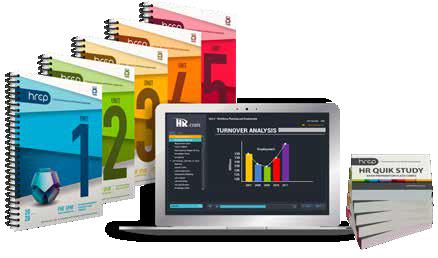
1 Less expensive than a masters or PhD program, and very
with 2. legislation and best practices 3. Recognized, Industry benchmark,
HR Professionals We offer
rates
For
All
CALL TODAY TO FIND OUT MORE 1.877.472.6648 ext. 3 | sales@hr.com | HR.com/prepcourse Group Rate Options 1 2 3
manageable to prepare
held by 500,000+
group
for teams of 5+ or more for our regularly scheduled PHR/SPHR/ SHRM or aPHR courses.
groups of 12+, we can design a more customized experience that meets your overall length of the course. Groups rates for HRCI exams are also available as an add-on.
group purchases come with 1 year of HR Prime membership for each attendee to gain the tools and updates needed to stay informed and compliant
5 Tips For building The best Talent and Unleashing rapid growth and innovation
 By Jill Stelfox, Panzura
By Jill Stelfox, Panzura
The Age of the Great Resignation has been a huge wake-up call for employers to better understand what employees want, and to develop better strategies on how to attract, train and retain them. Our vision for Panzura was to reimagine
what it means to be an employer – to break the “bro-culture” that is commonplace (especially in the tech world), and to bring in compassion and empathy to create a workplace environment that is inclusive and values our employees not only for their work
performance and productivity -but holistically, as human beings.
Our motto is “bring your weird”. That means to just be who you are. We encourage a company culture where people can be their true authentic selves. Just be at
Submit Your Articles Talent Management Excellence presented by HR.com November 2022 28
it’s good business sense to take care of people
Top pick
work and think freely. And out of this mindset, has come incredible innovation. We want to make employees feel valued not only in their contribution to the work they do but in who they are. Study after study shows that when employees are happy and cared for, you make money, so it’s not only a human-centered leadership philosophy but also a winning business strategy.
When employers take a holistic view of employment to provide good-paying jobs, career and personal development coaching opportunities, and transparent communication across supportive bosses, colleagues, and teams -- that’s when people will stay, because they feel a part of a culture where they feel a sense of value and belonging.
We re-founded Panzura the same day that California officially shut down due to Covid-19. While many companies paused when things shut down, we accelerated our efforts and had a “clear the road” mindset of rapidly innovating and hypergrowth, and as a result, we improved our margins. But we also knew that our employees would need extra support. So, we re-invested our profits in supporting our employees by giving them each a Better Up coach. Not just the leadership team, but every employee. But instead of coaching them on business topics, we encouraged them to do personal development training like stress management, parenting, nutrition, fitness, and sleep management. We know
that when their personal lives are great, they’ll spend their time here.
While recent economic shifts may indicate that the Great Resignation may not last much longer, the lessons learned should be carried forward into a new paradigm of more human-focused leadership and human capital management as a recipe for business success.
In summary, the 5 tips for building the best talent and unleashing rapid growth and innovation
1. Understand what employees want - The Age of the Great Resignation put this into sharp focus, as companies, especially in the tech sector have been vying for the best talent. Companies will not only attract but retain the best talent when they learn and then develop employment offerings that reflect what makes employees feel valued and cared for.
2. Promote diversity and inclusion – Most innovative teams bring together a diversity of people and talent. When people can be themselves for who they are, they feel they belong and are in the free-thinking zone of innovation. That is key in a rapid-growth startup environment.
3. Take a holistic approach – A more human-centered approach to human capital management is essential to the well-being and ultimately the retention of employees.
Seek to help employees fulfill their “human” potential in both their personal and professional paths.
4. Lead with compassion and empathy – Covid-19 brought about a new awareness of the human struggles we all share during the global pandemic like how to work and take care of your family, how to respond when employees are sick or when they are in crises, and how to keep employees safe. These lessons can and should be brought forward into the future of how to lead with employee wellness in mind.
5. Provide growth resources –Provide resources that can support employees in their professional or personal lives. When people’s lives are going well, they show up better and perform better, so it’s good business sense to take care of people, aside from it being the right thing to do!
Jill Stelfox is the Executive Chair and CEO of Panzura. Prior to joining Panzura, Jill founded and acted as Co-CEO of marketing consulting firm EDGY, where she helped companies from McAfee to Adobe to USAA to transform business and technology processes.
Would you like to comment?

Submit Your Articles Talent Management Excellence presented by HR.com November 2022 29
5 Tips For Building The Best Talent And Unleashing Rapid Growth And Innovation
Sometimes They Come back: Understanding The boomerang effect
The decision to hire a boomerang team member is ultimately a two-way street
 By Amy Zimmerman, Relay Payments
By Amy Zimmerman, Relay Payments
The Covid-19 pandemic changed the way many people think about work. In isolation, they took stock of their careers and lives and decided that a change was necessary. The stress and grief surrounding the pandemic led people to sit down with themselves and examine what their work really means to them – and many decided that their demanding positions just weren’t worth it anymore.
As more and more workers came face-to-face with the realities, and in some cases, mistreatment they encountered on a regular basis – especially as the pandemic drove many people throughout industries like travel, healthcare and education to the brink –they responded by quitting en masse.
Employers are still feeling the effects of the so-called Great Resignation. A recent McKinsey global survey revealed that the rate of workers leaving their jobs voluntarily is still 25 percent higher than it was before the pandemic hit. Even our current economic turmoil can’t stem the tide of resigning workers: a whopping 40 percent of team members plan to leave their current jobs within six months. And nearly a fifth of workers in the travel, healthcare, and consumer retail spaces who left their positions are currently planning to quit the world of work entirely instead of lining up another job.
As the dust began to settle from the pandemic, many people who resigned found themselves in a peculiar position: They realized that the grass was not greener on the other side and began to make moves to return to the jobs they’d left during the peak of the pandemic. This “boomerang effect” gave many employers a
Submit Your Articles Talent Management Excellence presented by HR.com November 2022 30
treasure trove of experienced team members who still possessed the institutional knowledge those companies needed to thrive. How can employers get these people back – and back to stay?
Employers should start by being honest with themselves about why these team members left in the first place. Did you allow a hostile work environment? Did team members feel marginalized and unseen? Were they encouraged to obtain the skills needed to grow in their roles? Ask yourself these tough questions and come up with a way to create real and lasting positive change.
Employers should also understand this is not the usual recession-and-recovery employment cycle: For one thing, many of these team members were not forced out. Instead, they quit on their own terms. Second, it’s easier to switch jobs than it once was, and competition for talent has only gotten fiercer since the pandemic began. There are also 2 million more open positions up for grabs now than there were last year – and, according to McKinsey, more than a third of the workers who quit during the Great Resignation did so without having a new job lined up. If workers are willing to place themselves in such financial jeopardy, employers need to understand their role in that and make moves to pick up the slack. Understanding that this is currently a job seeker’s market is a crucial step in making systemic changes that will both attract and retain high performers.
When a team member leaves the company, do everything you can to ensure that your working relationship ends on good terms. If you know why they’re leaving, have a conversation that acknowledges the issues that led to their departure, then resolve to fix them. Make sure that the departing colleague feels free to contact you as well as former colleagues anytime. Leave the lines of communication open and make sure they feel like a valued member of the organization – and that returning is always a viable option.
If you hear from a former team member who wants to return, make sure you understand exactly why they left and what’s motivating their desire to return. Perhaps
they miss the team, the industry, and the intellectual challenge the work provides. If you’ve left the lines of communication open, they should feel comfortable reaching out to discuss the idea of possibly returning to your company again.
Once you’ve begun the conversation, make sure you acknowledge the frustrations that ultimately caused them to leave previously. If nothing else, detail how you’ve changed the circumstances that led to their departure. Remember that you’re dealing with someone who has already made the decision to leave the company at least once. Be specific.
The good news is you’re already familiar with their skill set, personality, and work ethic, so you have options at your disposal. You can decide to welcome them back with open arms, or figure out the knowledge gaps that might keep them from being effective in the role they’re pursuing. The decision to hire a boomerang team member is ultimately a two-way street.
When it comes to welcoming back boomerang team members, clear and consistent communication is key. When both parties feel comfortable enough to lay out what they want and need from a return trip to your company, it’s easy to make sure everyone walks away feeling aligned and ready to tackle the challenges that lie ahead.
Amy Zimmerman is Chief People Officer at Relay Payments

.
Would you like to comment?
Submit Your Articles Talent Management Excellence presented by HR.com November 2022 31
Sometimes They Come Back: Understanding The Boomerang Effect
look Harder & Smarter For Marginalized, Talented resources
Do not sit back and hope for a miracle
By Joanne Lockwood, SEE Change Happen
Here in the UK, we are still hearing about talent shortages in the NHS and in the travel, delivery and hospitality industries to name but a few, yet we are still not being smart about tapping into the under represented and marginalized communities that have all the skills to plug the gap.
Take the technology sector. We are facing a huge skills gap in tech talent from programmers and engineers to sales, marketing, and recruiters, yet women, people with disabilities and the black communities are not being encouraged through their schools, colleges and universities to look at tech

Submit Your Articles Talent Management Excellence presented by HR.com November 2022 32
opportunities, nor are they being snapped up by future employers and trained. Instead, businesses are saying ‘it’s difficult to find the right candidates, rather than being proactive and creating their own pipelines. Rather than looking at our recruitment marketing and asking ourselves, ‘why are we not attracting these candidates’ and seeking them out, many organizations are sitting back and hoping for a miracle.
By building a talent pipeline of people who may have been marginalized and discouraged previously, training them, and paying them equally, organizations may just plug the gaps with people who are highly emotionally intelligent, driven, and creative and who typically have personal attributes beyond pure technical skill. Let’s also be clear that those from marginalized or underrepresented communities do not only have to be sought in the early stages of their careers but also at any point in their working years.
How else can we find this talent? Your competitors may well be sourcing potential candidates via social
media including TikTok, YouTube, Facebook, and Instagram. Checking for bias or negative signals on your social, branding, marketing, and website are key. Next set targets, gather data, track your goals, and adjust tack if need be.
Show potential candidates that they will be included and valued and there is a clear career path for them. If these candidates are truly trickier to reach, then you need to try harder and smarter.

Joanne Lockwood (she/her) is the founder and CEO of SEE Change Happen, and a Diversity & Inclusion Specialist who promotes transgender awareness in organizations. Would you like to comment?

Submit Your Articles Talent Management Excellence presented by HR.com November 2022 33
Harder &
For
Talented Resources
Look
Smarter
Marginalized,
Thank you for partnering with us!
THANK YOU
SkillSurvey’s talent intelligence platform provides actionable insights and optimizes talent decisions with feedback across the entire employee lifecycle.
Sterling, a leading provider of background and identity services, helps 47k+ global clients create people-first cultures and hire with confidence.



TRACOM is the leader in Social Intelligence training. We offer SOCIAL STYLE, Resilience, EQ and Agility assessments and training programs.

Art of Mentoring combines evidence-based mentoring expertise with the latest technological innovations to enable organisations to develop impactful, cost-effective mentoring programs.
Momentive is a new type of agile experience management company that delivers intuitive, AIpowered solutions built for the pace of modern business. We power the brave, curious, and ambitious who want to reshape their customer and employee experiences, products, industries— and our future. We put people at the center of our technology, and we’re here to collaborate with those who advocate for equality.
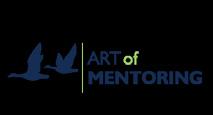 LEARN MORE
LEARN MORE
LEARN MORE
LEARN MORE
LEARN MORE
LEARN MORE
LEARN MORE
LEARN MORE
LEARN MORE
LEARN MORE
Founded with a single vision and purposeHarrison helps companies optimize human capital by leveraging a deep understanding of human resources and psychology.



LEARN MORE
Jobvite is a comprehensive talent acquisition suite that powers a marketinginspired recruiting approach from first look to first day.
LEARN MORE
Hireguide helps companies hire faster, fairer, and with certainty by making structured interviews easy to use. Plan interviews, transcribe your conversation, and evaluate candidates all in one place.

EVERFI’s workplace training offerings empower employees to transform their organizations' workplace cultures with impactful, change-driven courses that go beyond compliance.

PARTNER WITH US
LEARN MORE
LEARN MORE
November 29,
November 30,
The Future of Recruitment Technologies 2022
2022 regiSTer The Future of Personalized HR Services and Experiences
December 7-8,
2022 regiSTer
Talent Management Strategies From Hire to Retire
Successful
2022 regiSTer The Impact of Leave Benefits on Talent Retention
2022
- 2:00 PM ET regiSTer Behind the Screen: How to Compliantly Hire Someone
2022
PM - 1:00 PM ET regiSTer virTUal evenTS & Hr.CoM WebCaSTS UpCoMing www.hr.com/upcoming_webcasts www.hr.com/virtualconferences View our Upcoming Webcasts Schedule and Register Today! W eb C a STS Leveraging Technology to Remove Bias & Diversify Your Pipeline
7, 2022 12:00 PM - 1:00 PM ET regiSTer The Evolution of Employee Recognition2023 Trends
2022 11:00 AM - 12:00 PM ET regiSTer How HR Uses AI-Powered Texting for Recruiting and More
2022
PM - 2:00 PM ET regiSTer W eb C a STS vir TU al even TS View our Upcoming Virtual Conference Schedule and Register Today!
November 29,
1:00 PM
December 1,
12:00
December
December 6,
December 8,
1:00
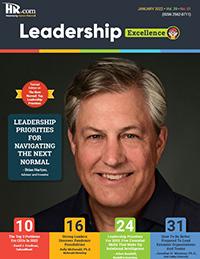
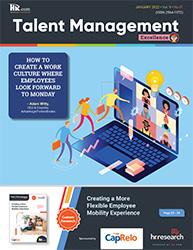
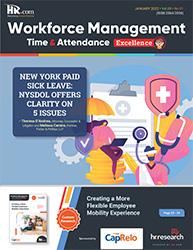
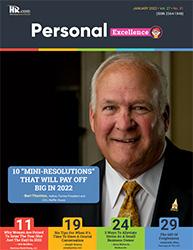
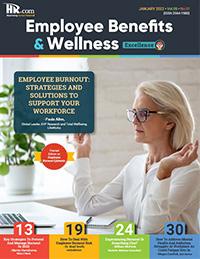
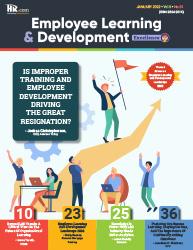
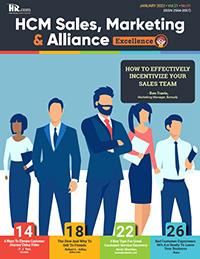
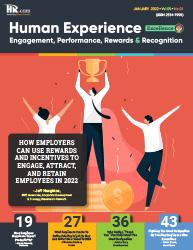
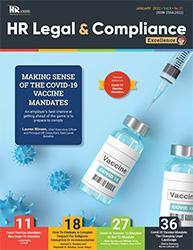
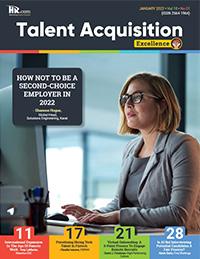
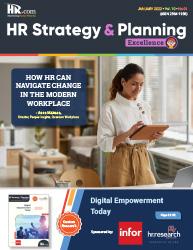


Like to submit an article? Use our online submission form or for more information go to www.hr.com/ExcellencePublications Publications 13 Targeted publications to reach your audience Informing, Educating, Enlightening and Assisting HR professionals in their personal and professional development, the Excellence series offers high-quality content through the publications!

more information:
1.877.472.6648 | Email:
|
Talent Management Excellence November 2022
For
Phone:
ePubeditors@hr.com
www.HR.com/epubs














































 By Jill Stelfox, Panzura
By Jill Stelfox, Panzura

 By Amy Zimmerman, Relay Payments
By Amy Zimmerman, Relay Payments








 LEARN MORE
LEARN MORE
LEARN MORE
LEARN MORE
LEARN MORE
LEARN MORE
LEARN MORE
LEARN MORE
LEARN MORE
LEARN MORE















